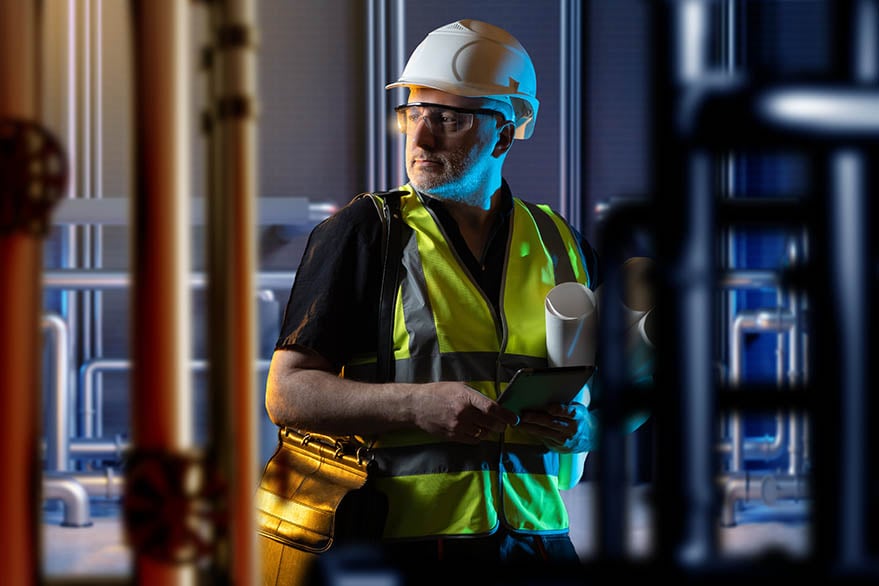Ideal Practices for Streamlining Facility Management Processes and Protocols
Ideal Practices for Streamlining Facility Management Processes and Protocols
Blog Article
Optimize Performance and Security: Finest Practices in Facility Management
In today's swiftly progressing landscape, making best use of performance and security in facility management has actually come to be an important focus for organizations making every effort to boost operational efficiency. By integrating smart technology, focusing on maintenance protocols, and cultivating a society of security, facility supervisors can considerably improve both performance and conformity. The obstacle lies in efficiently implementing these techniques while navigating the intricacies of contemporary workplaces. What certain techniques can be used to make sure that these initiatives not just coexist however also enhance one another in a lasting manner?
Embrace Smart Innovation

Executing wise sensing units and automation systems enables specific tracking of environmental conditions, occupancy levels, and devices performance. This data-driven technique not just educates decision-making yet additionally sustains anticipating upkeep, minimizing downtime and extending asset life. Additionally, wise innovation improves individual experience by producing adaptive atmospheres that respond to the demands of passengers.
Incorporating wise platforms also promotes sustainability campaigns, such as energy-efficient lights and cooling and heating systems, adding to minimized carbon impacts. By accepting these developments, facility managers can ensure that their operations remain competitive, resistant, and straightened with contemporary sustainability goals. Ultimately, the change in the direction of smart technology stands for a transformative action in redefining facility management for an extra effective and sustainable future.
Prioritize Routine Maintenance
Normal maintenance is essential for ensuring the long life and effectiveness of facility procedures. A well-structured maintenance program not only expands the life of devices and infrastructure yet likewise reduces the chance of unforeseen failings that can interrupt operations. By focusing on regular upkeep, facility supervisors can determine potential problems early, enabling prompt interventions that decrease expensive repairs and downtime.
Developing a regular maintenance timetable is necessary. This should consist of regular assessments, servicing, and needed repairs for all tools, heating and cooling systems, pipes, and electrical systems. Using a digital maintenance monitoring system (CMMS) can improve this process, supplying monitoring and notifies for upcoming upkeep tasks.
Additionally, cultivating a culture of liability among personnel boosts the effectiveness of maintenance initiatives. Educating personnel to report and identify maintenance concerns can cause proactive administration instead than responsive responses. Furthermore, recording upkeep activities guarantees conformity with safety and security regulations and offers useful understandings for future planning.
Implement Safety Training Programs
A detailed safety and security training program is essential for fostering a safe functioning setting in any kind of facility. Facility Management. Such programs equip workers with the understanding and abilities needed to recognize threats, implement safety protocols, and respond efficiently in emergencies. By focusing on security training, companies can substantially minimize the threat of injuries and crashes, thus enhancing total efficiency
To execute an efficient security training program, it is important to tailor the material to the particular needs of the facility and its operations. This consists of performing a detailed threat analysis to determine prospective risks one-of-a-kind to the here work environment. Training must include a variety of subjects such as correct devices usage, emergency evacuation treatments, and emergency treatment techniques.
Moreover, it is vital to involve workers actively throughout training sessions. Making use of hands-on presentations and real-life situations can boost understanding and retention of security practices. Regular refresher course programs should additionally be arranged to keep safety and security understanding at the forefront.
Optimize Room Use
Effective room usage is a crucial part of facility management that straight impacts functional effectiveness and cost-effectiveness. check here Organizations often fight with underutilized or overcrowded areas, resulting in inefficiencies and boosted expenses. To maximize space use, facility supervisors should perform regular evaluations to identify exactly how rooms are currently being made use of and where enhancements can be made.
Applying flexible work space designs, such as open workplace formats or modular furniture, can dramatically enhance flexibility to changing requirements. In addition, leveraging technology, such as area monitoring software, can supply valuable insights right into tenancy patterns and help determine underused locations.

Establish Clear Interaction Channels
Optimizing space usage typically discloses the demand for durable interaction strategies within a facility. Clear communication channels are important for assisting in efficient cooperation amongst team, upkeep groups, and management. By developing these channels, center supervisors can make sure that info streams effortlessly relating to area use, operational modifications, and security procedures.
Carrying out a multi-faceted communication method-- integrating digital platforms, such as e-mails and group partnership tools, with face-to-face interactions-- can substantially boost involvement and details circulation. Routine meetings should be set up to review recurring jobs, address issues, and share updates. Additionally, creating a central details hub, such as an intranet, allows employees to accessibility crucial files and announcements conveniently.
In addition, comments mechanisms are necessary to gauge the performance of interaction techniques. Urging team to share their understandings can lead to renovations and promote a culture of visibility. Training programs concentrated on communication skills can better equip staff members to communicate information plainly and efficiently.
Ultimately, developing clear communication networks not only maximizes effectiveness but additionally enhances safety and security by guaranteeing that every person is notified and straightened with the facility's functional goals.
Conclusion
In conclusion, the integration of wise modern technology, regular maintenance, detailed safety and security training, optimized space usage, and reliable interaction channels collectively enhances effectiveness and safety and security in center monitoring. These best practices serve as necessary parts for reliable facility management.
In today's rapidly developing landscape, making best use of performance and safety in facility management has become a vital focus for organizations aiming to improve functional performance. By integrating wise innovation, prioritizing maintenance protocols, and fostering a culture of safety, facility managers can significantly improve both productivity and conformity.To apply a reliable safety and security training program, it is critical to customize the material to the certain requirements of the facility and its operations. By developing these networks, center managers can guarantee that information moves flawlessly pertaining to area usage, operational adjustments, and safety and security procedures.
In final thought, the Facility Management assimilation of wise technology, routine maintenance, extensive security training, maximized area usage, and effective interaction networks collectively boosts performance and security in facility monitoring. - Facility Management
Report this page